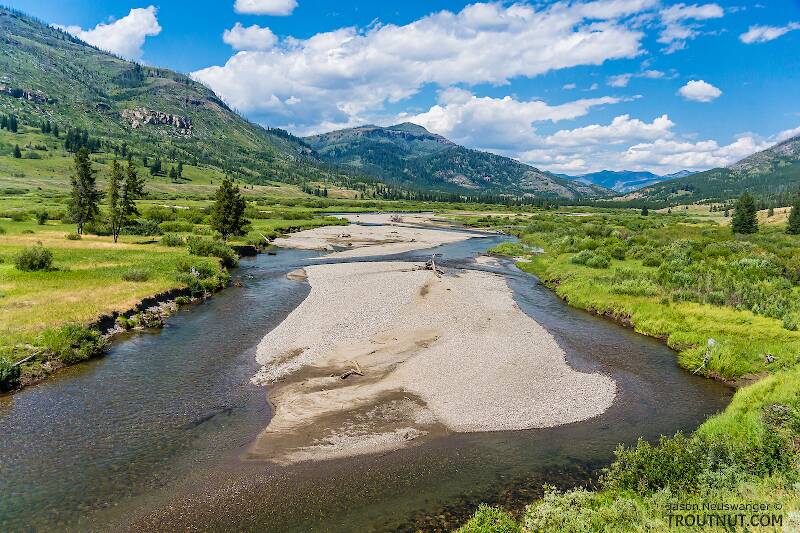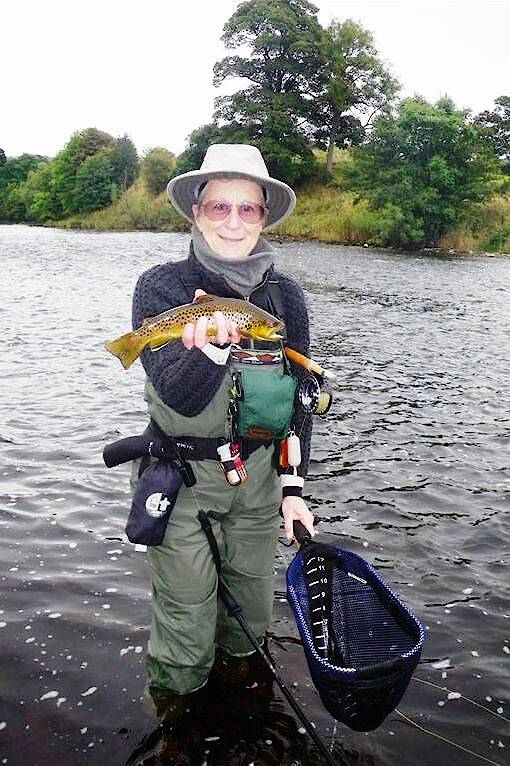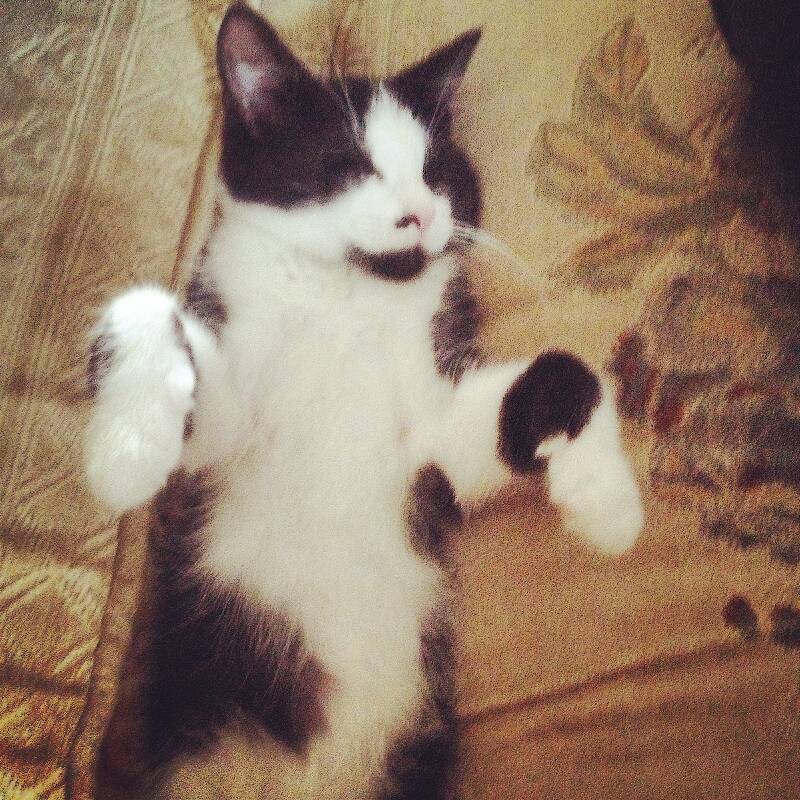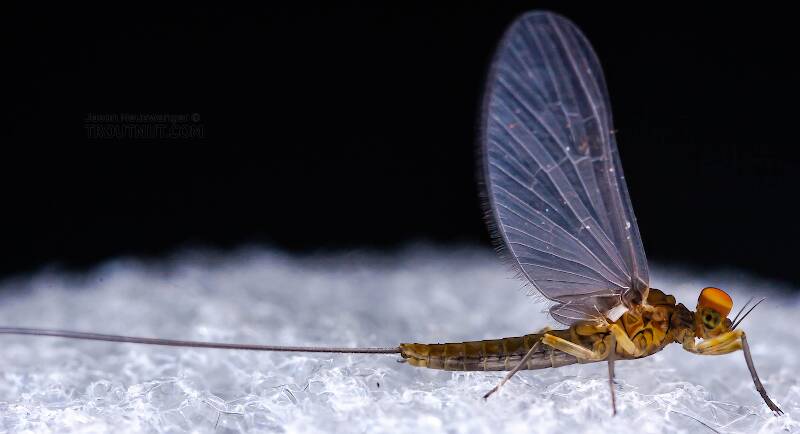
Blue-winged Olives
Baetis
Tiny Baetis mayflies are perhaps the most commonly encountered and imitated by anglers on all American trout streams due to their great abundance, widespread distribution, and trout-friendly emergence habits.
Featured on the forum
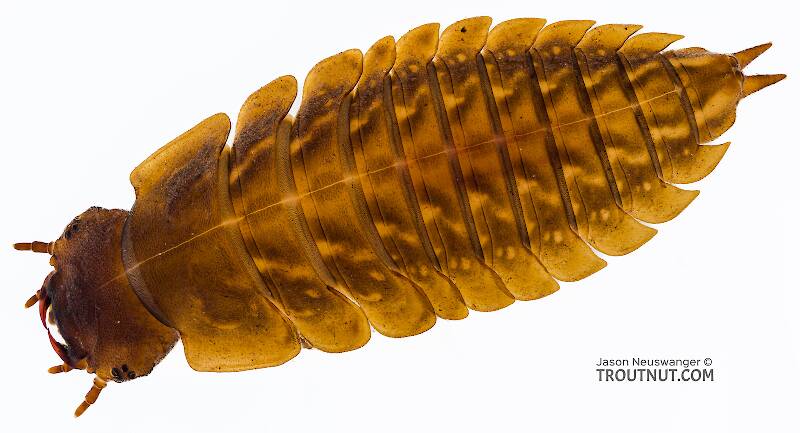
This is the first of it's family I've seen, collected from a tiny, fishless stream in the Cascades. The three species of this genus all live in the Northwest and are predators that primarily eat stonefly nymphs Merritt R.W., Cummins, K.W., and Berg, M.B. (2019).

Troutnut is a project started in 2003 by salmonid ecologist Jason "Troutnut" Neuswanger to help anglers and
fly tyers unabashedly embrace the entomological side of the sport. Learn more about Troutnut or
support the project for an enhanced experience here.
TedderX
Posts: 6
Posts: 6
TedderX on May 22, 2016May 22nd, 2016, 2:42 pm EDT
1. Why are fly fishing rods so long? Like 9 foot and such. Especially in the east, where there are so many trees on rivers.
2. Fly fishing rods used to be made of cane. Are they as good as modern graphite and such? Better? Worse?
3. Why do fly fishing reels have a drag on them, if "typically" you pull a fish in by the line?
4. How important is floating fly line vs. sinking fly line?
5. Does "tenkara" use flies and essentially the same minus the reel?
2. Fly fishing rods used to be made of cane. Are they as good as modern graphite and such? Better? Worse?
3. Why do fly fishing reels have a drag on them, if "typically" you pull a fish in by the line?
4. How important is floating fly line vs. sinking fly line?
5. Does "tenkara" use flies and essentially the same minus the reel?
CaseyP on May 22, 2016May 22nd, 2016, 4:24 pm EDT
1. modern graphite rods are made around 9' because they cast well that way. shorter rods are typically for lower weights and shorter casts; longer rods for heavier rods casting longer distance. see "spey rods"
2.Cane and graphite rods are different; both can be excellent or not, depending on the skill of the maker or the angler.
3. drag is necessary for a large fish that will run 350 yards before slowing enough for you to strip it in. see "bonefish"
4. floating and sinking lines are used differently and do not substitute, rather like butter and bacon grease.
5. yes, but they're much longer rods with much shorter lines
2.Cane and graphite rods are different; both can be excellent or not, depending on the skill of the maker or the angler.
3. drag is necessary for a large fish that will run 350 yards before slowing enough for you to strip it in. see "bonefish"
4. floating and sinking lines are used differently and do not substitute, rather like butter and bacon grease.
5. yes, but they're much longer rods with much shorter lines
"You can observe a lot by watching." Yogi Berra
TimCat on May 23, 2016May 23rd, 2016, 3:04 pm EDT
Hey Tedder, to expand on your first question, sometimes a longer rod in tight spaces can be more helpful than a shorter rod. The extra length allows you to have a longer "lever", and can help you make a longer roll cast and/or to "dap" your fly with a longer reach. This is partly why tenkara rods are usually longer even though they are used for tight spaces historically.
"If I'm not going to catch anything, then I 'd rather not catch anything on flies" - Bob Lawless
CaseyP on May 23, 2016May 23rd, 2016, 4:44 pm EDT
even though they are used for tight spaces historically.
the one film i've seen of Tenkara in it's native place showed no trees at all. maybe deforestation was a problem in overcrowded Japan? or maybe the trees were all small ones?
"You can observe a lot by watching." Yogi Berra
Quick Reply
Related Discussions
Topic
Replies
Last Reply
1
Jun 3, 2013
by Brookyman
by Brookyman
2
Jul 5, 2009
by Pdq5oh
by Pdq5oh

